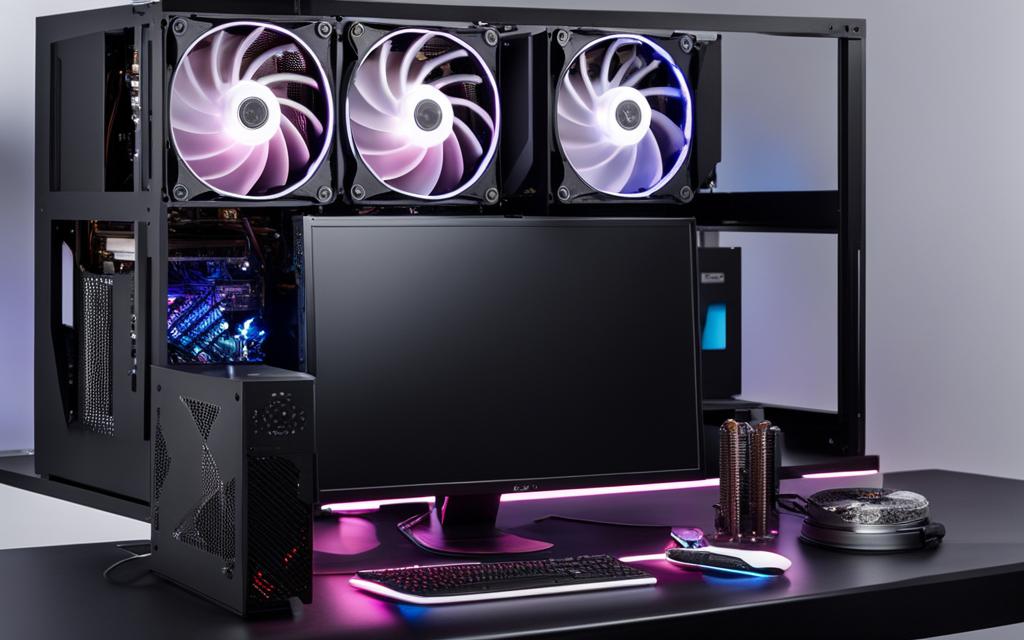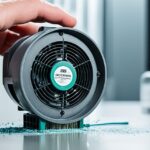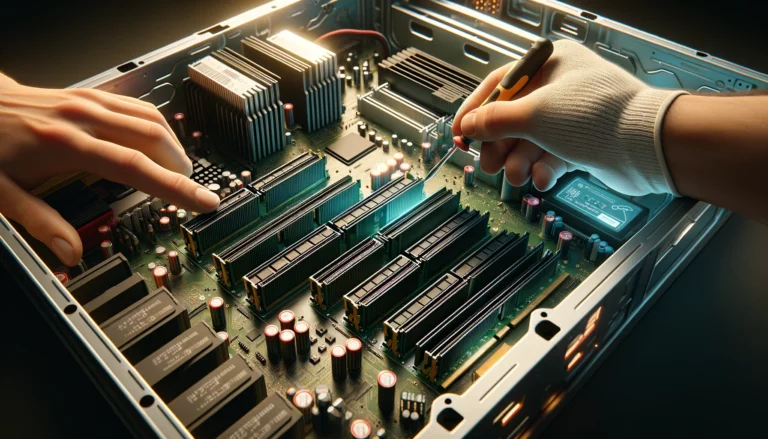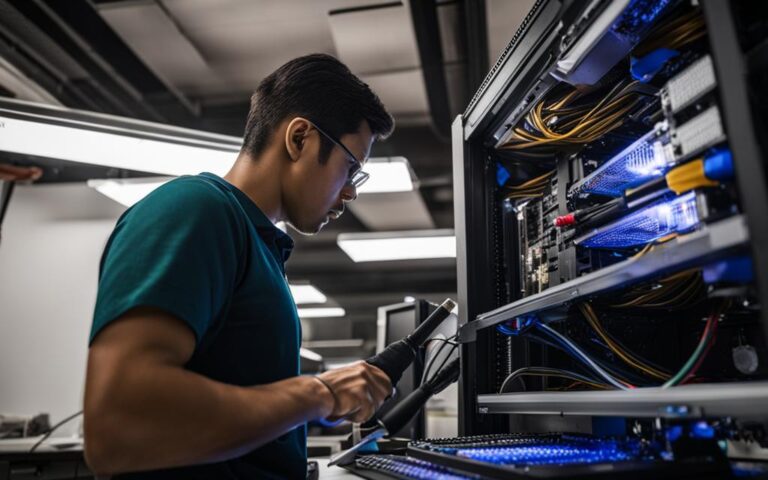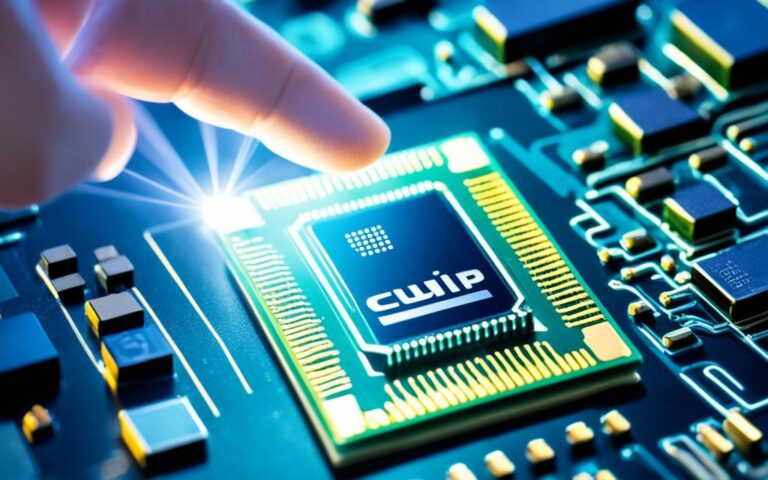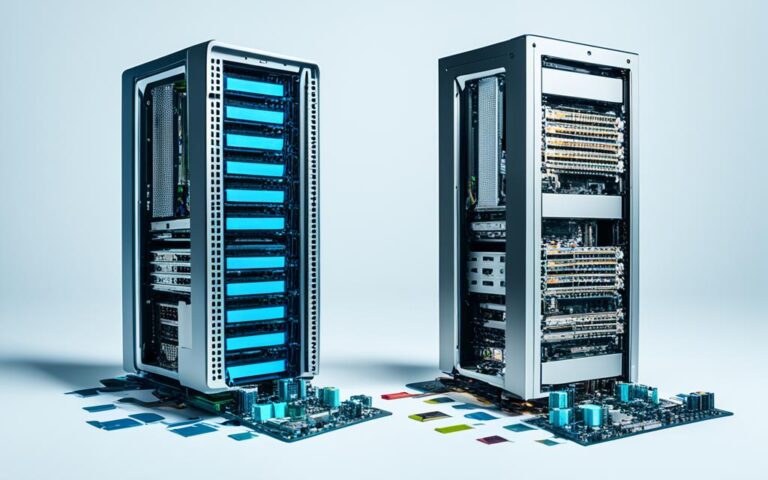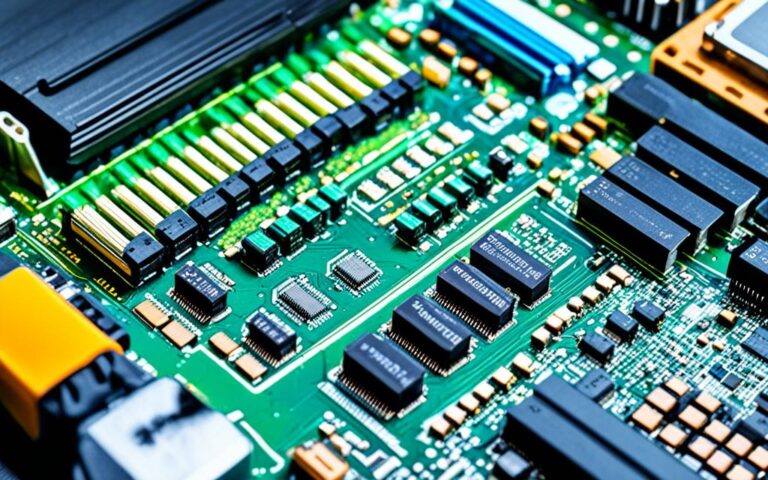Fixing Overheating Problems in High-Performance Desktops
High-performance desktops are powerhouses of computing capability, but they can also face the challenge of overheating. This issue can not only affect the performance of your computer but also potentially cause damage to its software and hardware components. To ensure optimal performance and prevent any potential problems, it’s essential to understand the common causes of desktop overheating and the solutions to fix them.
Some common reasons for desktop overheating include too many processes and applications running simultaneously, unresponsive applications, defective fans, blocked air vents, outdated software, viruses or malware, overheated CPU or GPU, and dust buildup on fans and vents. To fix these overheating problems, you need to implement a combination of preventive measures and cooling solutions.
In this article, we will explore the common causes of desktop overheating, the solutions to cool down your computer, how computer cooling works, and the steps to prevent desktop overheating. By following these guidelines, you can maintain the optimal performance of your high-performance desktop and prevent any potential damage.
Common Causes of Desktop Overheating
Desktop overheating can be attributed to various common causes, including excessive heat, blocked air vents, outdated software, and the presence of viruses or malware. Understanding these causes is crucial in preventing desktop overheating and maintaining optimal performance.
Excessive Heat
Excessive heat is a leading cause of desktop overheating. Multiple factors can contribute to this, such as running too many processes and applications simultaneously, unresponsive applications, excessive open browser tabs, defective fans, overheated CPU or GPU, and dust buildup on fans and vents.
Blocked Air Vents
Blocked air vents can impede proper airflow within the desktop, leading to increased heat accumulation. Insufficient ventilation can cause components to overheat and compromise the overall performance of the system.
Outdated Software
Outdated software can strain system resources, resulting in increased heat generation. Inefficient utilization of resources due to outdated software can lead to excessive heat buildup and contribute to desktop overheating.
Viruses and Malware
The presence of viruses and malware can significantly impact a system’s performance and contribute to overheating. These malicious programs impose a heavy load on the system, causing it to work harder and generate additional heat.
By identifying and addressing these common causes, users can effectively prevent desktop overheating and ensure the optimal performance and longevity of their systems.
| Common Causes | Descriptions |
|---|---|
| Excessive Heat | Includes factors such as running too many processes and applications simultaneously, unresponsive applications, excessive open browser tabs, defective fans, overheated CPU or GPU, and dust buildup on fans and vents. |
| Blocked Air Vents | Occurs when air vents are obstructed, leading to limited airflow and inadequate heat dissipation. |
| Outdated Software | Refers to using software versions that are no longer supported or fail to optimize resource usage, resulting in increased heat generation. |
| Viruses and Malware | Includes the presence of malicious programs that overload the system, causing it to work harder and generate additional heat. |
Solutions to Cool Down Your Computer
If your computer is experiencing overheating issues, there are several solutions you can try. By implementing these cooling measures, you can prevent damage to your hardware and ensure optimal performance.
Clean Your PC
One effective solution is to clean your PC by removing dust and debris that may be blocking airflow. Over time, dust accumulates on fans and vents, hindering proper cooling. Regularly cleaning your PC can improve airflow and prevent overheating.
Improve Airflow
Another solution is to improve airflow around your computer. Many desktops and laptops have air vents located on the bottom or sides. Placing your computer on a hard surface and ensuring there is adequate space around it can help air circulate freely and cool down the components.
Check the Fans
Fans play a crucial role in keeping your computer cool. Over time, fans can accumulate dust and become less efficient. Checking the fans and cleaning them if necessary can ensure they are working properly and providing adequate cooling.
Reapply Thermal Paste
Thermal paste is a heat-conductive material that connects the CPU or GPU with the heat sinks. Over time, the thermal paste may deteriorate, leading to poor heat dissipation. Reapplying thermal paste on your CPU or GPU can enhance heat transfer and improve cooling.
Use an External Cooling System
If your computer still struggles with overheating, using an external cooling system can provide additional help. Cooling pads for laptops and additional fans for desktops can help dissipate heat and cool down your computer more effectively.
Close Resource-Intensive Apps
Resource-intensive applications can put a heavy load on your computer, generating more heat. Closing unnecessary applications and giving your computer a break can help cool it down.
By implementing these solutions, you can effectively cool down your computer and prevent overheating issues. Remember to regularly clean your PC and monitor its temperature to ensure optimal performance and prolong the lifespan of your hardware.
How Does Computer Cooling Work?
Computer cooling plays a crucial role in maintaining optimal performance and preventing overheating issues. Understanding how computer cooling works can help identify and address problems effectively.
Computer cooling primarily involves facilitating air flow and heat dissipation. The computer’s casing is equipped with vents that allow cool air to enter while releasing hot air from inside.
The key components involved in computer cooling are:
- Fans: Fans play a vital role in moving the air and increasing airflow within the computer. They help in expelling hot air and bringing in cool air, thus maintaining a proper temperature inside the system.
- Heat Sink: The heat sink is a device attached to the CPU or GPU, which absorbs and dissipates heat generated by these processors. It acts as a heat conductor and helps in cooling down the components.
- Thermal Paste: Thermal paste is applied to the heat sink to enhance heat transfer and conductivity. It helps in efficiently conducting heat away from the CPU or GPU, allowing the heat sink to dissipate it.
- Automatic Cooling Mechanisms: Modern computers are equipped with cooling software that employs automatic mechanisms to increase cooling when the system is performing demanding tasks over a prolonged period. This ensures that the computer remains within safe temperature limits.
By effectively utilizing these components, computer cooling systems maintain a proper balance of air flow and heat dissipation, preventing overheating and ensuring optimal performance.
Now that we understand how computer cooling works, let’s explore some preventive measures to avoid desktop overheating and potential damage to your system.
Preventing Desktop Overheating
Preventing desktop overheating is crucial to ensure optimal performance and prevent damage to both physical and software components. By taking proactive steps, you can effectively mitigate the risk of overheating and prolong the lifespan of your high-performance desktop.
Monitor Heat Exposure
One of the primary steps in preventing desktop overheating is to monitor the heat exposure of your computer. Regularly check the temperature of key components such as the CPU and GPU to identify any potential issues. Utilizing temperature monitoring software can provide real-time updates on your computer’s internal heat levels, allowing you to take immediate action if necessary.
Identify and Close Resource-Hungry Apps
Resource-hungry applications can significantly contribute to desktop overheating. Identify any programs that excessively consume system resources and close them when not in use. This reduces the strain on your system, minimizing heat generation. Additionally, avoiding running too many applications simultaneously can prevent unnecessary overloading, resulting in a cooler system.
Minimize Browser Tabs and Uninstall Unnecessary Apps
Having a multitude of browser tabs open can put a strain on your system, leading to increased heat production. Minimize the number of tabs to only what is necessary and regularly close unused tabs. This helps reduce the overall load on your computer, promoting smoother operation and preventing overheating. Uninstalling unnecessary applications also helps to declutter your system and reduce resource consumption, further minimizing the risk of overheating.
Update Software Regularly
Outdated software can contribute to inefficient use of system resources, leading to increased heat generation. Ensure that your operating system, drivers, and applications are regularly updated to their latest versions. Software updates often include performance enhancements and bug fixes that can optimize resource utilization and reduce the risk of overheating.
Scan for Malware and Install Reliable Antivirus Software
Viruses and malware can impose a heavy load on your system, causing it to overheat. Regularly scan your computer for malware and ensure that you have reliable antivirus software installed. This helps detect and remove any malicious software that may be negatively impacting your computer’s performance and generating excess heat.
“Preventing desktop overheating is not only essential for optimal performance but also for prolonging the life of your high-performance computer.” – TechTech Magazine
By following these preventive measures, you can effectively prevent desktop overheating and ensure the longevity of your high-performance desktop. Monitoring heat exposure, identifying resource-hungry apps and closing background programs, minimizing browser tabs, updating software regularly, and scanning for malware all contribute to a cooler and more efficient system.
| Preventive Measures | Benefits |
|---|---|
| Monitor heat exposure | Allows proactive cooling measures |
| Identify resource-hungry apps and close background programs | Reduces strain on the system, minimizing heat generation |
| Minimize browser tabs and uninstall unnecessary apps | Reduces overall load on the system, preventing overheating |
| Update software regularly | Optimizes resource utilization, minimizing heat production |
| Scan for malware and install reliable antivirus software | Prevents malware-induced system load and overheating |
Following these preventive measures will help you maintain a cooler and more efficient high-performance desktop, ensuring optimal performance and preventing damage from overheating.
Signs of Overheating and Troubleshooting Steps
When it comes to desktop overheating, it’s important to be aware of the warning signs and take immediate action to prevent further damage. By recognizing the signs of overheating and following the proper troubleshooting steps, you can ensure the optimal performance and longevity of your computer.
Signs of Overheating
There are several indicators that your desktop may be overheating:
- A computer that is hot to the touch: If your computer feels unusually hot, particularly on the surface or near the vents, it could indicate a heat buildup.
- A fan running in overdrive: If you notice that your computer’s fan is constantly running at high speeds, even during normal usage, it may be trying to cool down an overheated system.
- Loud whirring noises: Unusual or excessively loud noises coming from your computer’s fans can be a sign of overheating.
- Computer slowdowns: If your computer starts to lag or becomes sluggish during regular tasks, it could be due to temperature-related performance issues.
- Shutdowns: Random shutdowns or unexpected system reboots are often caused by overheating as a protective measure.
Recognizing these signs is crucial in identifying and addressing potential overheating problems before they cause irreparable damage to your computer.
Troubleshooting Steps
If you suspect your desktop is overheating, here are some troubleshooting steps you can take:
- Check the temperature: Use temperature monitoring software to check the internal temperature of your computer. Temperatures exceeding 70 degrees Celsius are considered high and may indicate overheating.
- Ensure proper fan function: Make sure all fans in your computer are working correctly. Clean the fan blades and surrounding area to remove any dust or debris that may obstruct airflow.
- Improve airflow: Ensure your computer has proper ventilation by keeping it on a hard surface and allowing adequate space around it. Avoid placing your computer in enclosed spaces or covering the vents.
- Avoid demanding applications: Close unnecessary resource-intensive applications and limit the number of open browser tabs to reduce the strain on your computer’s components and minimize heat generation.
- Clean and dust the computer: Regularly clean the internal components of your computer using compressed air or an antistatic brush to remove dust buildup on fans, heat sinks, and other areas.
- Reapply thermal paste: If you have experience with hardware, consider reapplying thermal paste between the CPU or GPU and the heat sink. This can help improve heat transfer and cooling efficiency.
- Adjust internal settings: Some BIOS settings allow you to modify fan speed control or CPU frequency, which can help regulate temperature. Consult your computer’s documentation for guidance.
- Check for viruses and malware: Run a comprehensive scan with reliable antivirus software to rule out the possibility of a virus or malware causing excessive load on your system.
- Keep your computer updated: Ensure that your operating system, drivers, and applications are up to date with the latest patches and updates. This can help optimize performance and address potential software-related issues.
By following these troubleshooting steps, you can effectively address overheating issues and maintain the performance and stability of your desktop computer.
Conclusion
Desktop overheating can lead to damage to software and hardware components, impacting the optimal performance of high-performance PCs. To prevent such damage and ensure effective cooling of desktops, it is crucial to implement appropriate solutions and regularly maintain the system.
Several desktop overheating solutions can be employed to optimize performance and prevent damage. Cleaning the PC regularly and improving airflow by checking fans and removing any blockages are simple yet effective measures. Reapplying thermal paste between the CPU or GPU and heat sinks can enhance heat dissipation, while the use of external cooling systems, such as cooling pads or additional fans, can provide supplementary cooling support.
Additionally, closing resource-intensive applications can alleviate heat generation, while monitoring heat exposure and adjusting cooling measures accordingly can prevent overheating. Regular maintenance practices, including cleaning the PC, updating software, and scanning for malware, are essential to ensure optimal performance and prevent desktop overheating.
By following these desktop overheating solutions and adopting regular maintenance routines, users can effectively cool their high-performance desktops. This will not only optimize system performance but also prevent potential damage, resulting in prolonged durability and a reliable computing experience.
